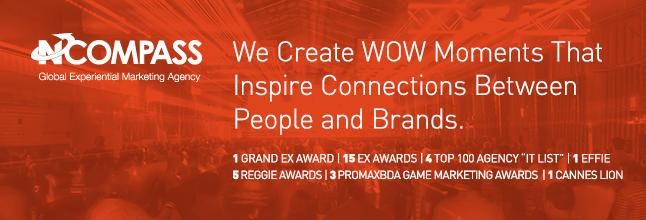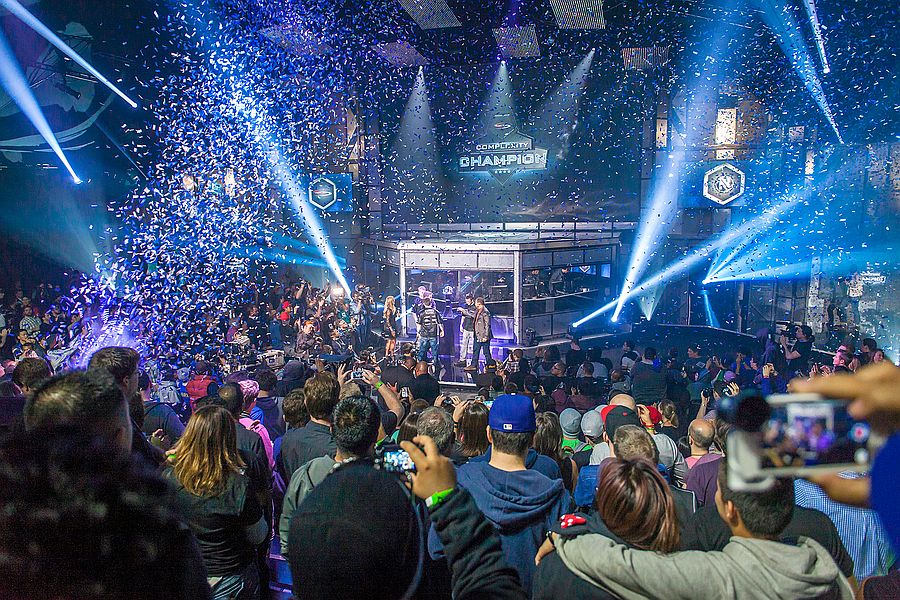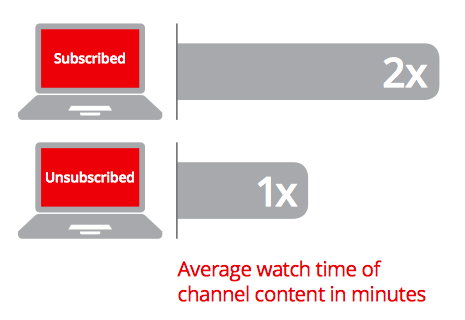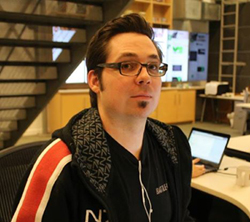Marketing and production company NCompass has worked behind the scenes on some big eSports events over the years with major publishers and brands. The NCompass-produced Call of Duty XP in 2011 was a groundbreaking initiative for eSports which, in turn, inspired the celebrated Call of Duty World Championship in 2013 and 2014. Last year, the Best Buy Ultimate Gamers Showdown culminated at the Dallas Cowboys’ Stadium making Madden 25 larger than life on the biggest screen in the country. Additionally, NCompass has executed a global tournament for Kinect Sports Rivals with a live culmination at San Diego Comic Con.
Now NCompass has partnered with Major League Gaming (MLG) to further integrate brands and sponsors into global events. As part of the new deal, NCompass is working with MLG to design new eSports arenas in China and Columbus, Ohio in an effort to increase the production value for fans and open up new opportunities for mainstream brands. This partnership will introduce new opportunities for brands to tap into the massive worldwide gaming audience through events and sponsorships, on-site activations, broadcast integrations and 360° marketing campaigns for the retail, QSR, beverage, CPG and automotive industries. Ryan Fitzpatrick, Vice President, Lifestyle Marketing and Branded Entertainment, NCompass International, explains what’s in store in this exclusive interview.
How have you seen eSports grow over the years
The growth has been exponential since NCompass got involved about seven years ago. It’s grown in such a way that we’re seeing massive amounts of content that these programs are creating. We’ve gone from live audiences of 500 people to 10,000 people to online viewerships in the millions online.
What role has livestreaming played in this success?
Livestreaming has been the ultimate reason we’ve seen such success. We did Call of Duty XP in 2011 and the Call of Duty Championship the last two years as well. The broadcast component does change these things. We’re trying to push for an experience that’s like a show. In the past you’d do an eSports event and put a camera in front of it. We’re trying to create an eSports event for broadcast and work with Hollywood professionals on production design so it feels like a big entertainment event.
What role will stadiums play in eSports moving forward?

Stadiums play a big role because those are the only real places where we can do these massive on-site spectator events. We have the more controlled studio environment with set pieces for smaller events without the complications of 8,000 to 15,000 people. One of the key elements of our MLG partnership is opportunity to work with them on developing and designing the MLG Arena in China. We’ll be able to give some direction on what an eSports arena needs to have and see it built from the ground up.
How will the Chinese arena compare to these eSports Arenas we’re starting to see in the U.S., including the MLG one being built in Columbus, Ohio?
An eSports arena like the MLG Arena in Ohio and the Irvine Arena are really broadcast studios where we can highlight gameplay and competition. In China, we’re talking about something on the scale of a Staples Center designed exclusively for eSports. It will be the coolest LAN Center 80 percent of the time and then turn into a place where it can be a production studio for events. It’s pretty massive. It’ll be in this heavy entertainment destination with a lot of foot traffic, but the initial numbers will be massive.
How big is massive compared to eSports events we’re seeing now in soccer stadiums?
It’d be massive compared to soccer stadium, which are typically one to three day events. With this arena we’re talking about an actual multiyear agreement where we’re doing programming 365 days a year. About 20 percent of the time will be these massive events for 10,000 to 20,000 people. We have the support of the Chinese government. Working together to make sure the programming is consistent throughout the year.
How do you see the U.S. catching up to what’s happening in China and Asia?
The eSports world has been driven by what’s been happened in Asia over the last 10 to 15 years. Our goals and hopes with MLG Arena in China and in the States and throughout Europe and South America is that it becomes more of a unified global phenomenon.
Where do you see eSports five years from now?

Five years from now, eSports will continue along this trajectory. Over the next two to three years we’ll see a pretty massive spike. Look at MLG this winter and the exposure with Summer X-Games on ESPN with a more mainstream audience. When you look at some of the numbers in the U.S., eSports has become a more socially acceptable thing. It’s not as much as a surprise when you say you’re going to an event with 10,000 to 20,000 other gamers.
How do you see new games entering eSports?
In the past, the room for new games has been dictated by leagues like MLG and ESL and what they do. We bring the creative, content and production resources to MLG to expand the Pro Circuit and start incorporating other titles into their league and ranking system.
How do you see established stadiums impact sponsors and advertisers?
Sponsors will be huge for the right brands to get on board eSports at the right time. Some brands are already dabbling with it, while others are going deeper. There are opportunities for non-gaming endemic brands to align themselves with what is national pastime. What helps big brands is when people in power positions with brands have kids and they see how they consume eSports online — usually through gaming consoles and gaming content. That’s what makes conversations easier. Plenty of people are savvy enough to see the huge growth opportunity with gaming.
How does the concept of eSports spectacles at stadiums help with mainstream growth?
The spectacle impacts what people see on site in the audience as well as view online. We’re drawing on our experience of event production and experiential marketing. We’re bringing in top rock and roll and Hollywood set designers, pulling people in from other worlds and bringing new technology from both Hollywood and the music touring industries to raise the bar for esports productions.
How does having a dedicated arena help stage eSports spectacles?
With arenas like China, a lot of that is tied to budget and going back to a space repeatedly and having the time and budget to make the production much bigger and better. When we start establishing more arenas, the level of production is going to skyrocket.
What opportunities do eSports arenas open up for sponsors?
With connected stadiums, that’s where a forward-thinking brand partner is going to come in — like a telecom partner to power the arena. ESports is different than traditional sports because the action is on the screen and not really tied to the 11 competitors playing. I think we’ll see new ways to connect fans to the players through these connected arenas.

 Ian Tornay, Associate Director of Social Strategy at Ayzenberg
Ian Tornay, Associate Director of Social Strategy at Ayzenberg
